
drtreelove
-
Posts
1,890 -
Joined
-
Last visited
Posts posted by drtreelove
-
-
3 hours ago, sometime said:
Because they are killing my foxtail palms
For ornamental palms you may consider a barrier insecticide application for prevention, and/or a systemic insecticide soil drench for root uptake.
Pyrethroids like a cypermethrin and bifenthrin combination are inexpensive and low toxicity for mammals, and provide a month or more of residual effectiveness as a barrier if you drench the growing point and upper tree trunk with a spray solution. It binds to the surface organic matter and provides a barrier for new beetle activity, but does not penetrate tissues and go systemic for beetles that are already in the tree.
Botanical (organic program) biopesticides like the neem seed extract 'Azadirachtin' are a repellent barrier and are widely available and non-toxic but more expensive and require frequent repeated spray applications, every week during high risk periods of activity.
Feasibility of spraying is dependent on size of palms and spray equipment to reach the tops.
Starkle-G (dinotefuran) is a widely available, potent, neonicotinoid, low toxicity systemic insecticide that is fast acting for uptake. With a soil drench application or injection there is minimal environmental contamination or danger for exposure to pollinators. Acephate is somewhat available, and is even faster and more effective and cheaper. It is low toxicity for mammals but a stinky older generation organophosphate systemic insecticide. Either of these systemics can be stem-injected for minimal material and environmental exposure. Acephate or secondly, StarkleG would be my choice for immediate control of an active infestation for non-food ornamental palms. Not appropriate for coconut or oil palms. With this method you can save a palm that is under beetle attack, where bait traps, sanitation and biological control are longer term preventive measures.
-
 2
2
-
-
I can't answer your question but i do have some information and experience with CRB control methods and materials and I would be happy to share if you are interested. I don't think bait traps are widely used here, and there are some limitations.
Bait traps for CRB and fruit flies etc are usually marginally effective and only get a percentage of the population, still allowing for significant infestation. A combination of methods is usually most effective. Sanitation (removing dead and dying palms and cleaning up downed wood waste debris) and netting compost and manure piles to prevent the adult beetles from flying out to the palm crowns from the ground breeding sites, being major management essentials, along with chemical or biological control. Maybe that is what you are doing.
"On Guam, mass trapping using CRB aggregation pheromone, ethyl 4-methyloctanoate, was ineffective for population control. Recent improvements have increased trap catch rates by more than an order of magnitude. These improvements include equipping pheromone traps with solar powered ultraviolet light emitting diodes and mounting the traps on steel drums containing artificial breeding sites."There is a biological control method that is used here by Dept of Ag programs, a fungus that infects and kills the CRB larvae in the breeding sites. -
On 1/30/2019 at 9:28 AM, thaiguzzi said:
Yawn.
Give it a rest will ya.
In 15 years the only person who has worked/driven a tractor on our 64 rai (approx 25 acres) is, wait for it... me.
I think the heads up notes are appropriate for advising a newbie. Of course you can get away with it, but in fact it is illegal. You can jump the border and live for years, you can drive drunk without a license or insurance, you can get away with a lot of things, until something happens and you get busted and then you're screwed. I'm a calculated risk taker, but I don't advise anyone else to be.
-
 2
2
-
-
On 1/27/2019 at 4:50 PM, Cashboy said:
I didn't realise there was anything grown organicly in Thailand by the way they throw chemicals on everything and have no idea what Crop Rotation is.
They? Referring to all of Thailand? You are only partially right. You may be surprised at some progressive organic programs you would find if you look.
-
- Popular Post
- Popular Post
Besides the legal restrictions pointed out, and the need to have a Thai wife or partner, consider how much time and money you would have to put into property that isn't yours and can be taken away after your lease period. There is always the chance that when you improve the property and make it productive, that it will become more valuable to the owner to sell or take back for his own use.
It happened to us. We took over a 10 rai farm from the wife of an expat friend who had died. We had a three year lease with assurance that she didn't intend to sell and that we could stay there indefinitely. We knew it was a calculated risk but we loved the farm and went for it. We put a lot of labor and money into fencing, revitalizing the lamyai and mango orchards, restoring a bore well and water tank tower, irrigation system, soil building and other improvements. Then she sold the property out from under us.
-
 4
4
-
 5
5
-
- Popular Post
- Popular Post
2 hours ago, IsaanAussie said:My advise would be to make sure you understand Thai families and their culture first.
May need more than 20 years for that. ????
I recommend first growing a legume green manure crop during the rainy season. If you do this before you invest a lot of time and money, it will get you some experience with the land and the people and the resources available, and start to build soil fertility.
-
 5
5
-
 1
1
-
On 1/27/2019 at 11:44 AM, cooked said:
Well that died a death, the package didn't arrive.
I eventually found, on Lazada: https://www.lazada.co.th/-i227599906-s347985604.html?urlFlag=true&mp=1 which seems to have more nutrients than suggested (Wesco) or the one I wanted from Switzerland. Also much better value.
Th same shop has some other micro-nutrients also. I drenched my pineapples at the same time as recommended, will start a regular spraying program in a week or two
Thanks guys.
Check your soil and water pH levels, as alkalininty can affect plant uptake and assimilation of some micronutrients.
I was getting interveinal chlorosis with some plants in our small garden. I did a full soil analysis a couple of years ago and applied prescription amendments which helped. But I found the municipal water supply to be at pH 8.0 so continually influencing alkalinity. I am now pumping from a holding tank to which I add some vinegar to neutralize the pH somewhat. i can also fertigate with EM that I am brewing from a commercial concentrate. I'm mulching with compost which helps acidify, and my homemade fertilizer blend has natural sulfates (gypsum /CaSO4, epsom salts /MgSO4, and sulfate of potash/K2SO4), which provide Sulfur as well as the primary cations, and this helps balance the chemistry. My dry fert blend also contains Azomite for volcanic trace minerals and Agrolig humates (from Evolare's wife's bonemeal.net organic farming supplies. Garden and house plants are coming around with better color, healthy growth, and good pest/disease resistance.
-
 1
1
-
-
22 hours ago, Pilotman said:
One of our Thai Nephews is a village teacher. He is a serious and dedicated young man and I know that he treats the children well and is liked and respected by his students. However, after Military service, he trained as an electrician and then took up teaching. Zero teacher training for him and zero checks done on his competence to teach. I do like the lad, but his level of pure knowledge and awareness of the outside world is minimal to say the least. That says everything that needs to be said about the education system here.
We all know there is always another side to any story. My 27yo Thai stepdaughter is a high school science teacher in the public school system. She has double degrees in biology and education and she's brilliant, kind and caring, gets her students to think outside the box, and is respected by students and peers. She takes offense to your characterization of the village doofus as representative of the entire Thai education system.
I asked her about this issue and she brought to light something that is being ignored in all the arrogant negativity characteristic with many TV posters and Facebookers. Lice. Besides the cultural tradition and perceived benefits of uniformity for younger students, and lessons in humility as important for character building, it is hers and the system's view of policy, that historically infestations of head lice become rampant in younger students in a close environment. They believe that short hair limits the infestations and is a benefit to the student community. Individuality and self expression must be sacrificed for the larger public health cause, like it or not. The alternative of chemical treatment is not always affordable or acceptable to all families, so it doesn't get done dependably enough for effective control.
In older students head lice becomes less of an issue and longer hair is allowed.
-
Any growers been through the organic cert process in Thailand?
If so please share experiences, agencies, process, etc.
-
"Jandtaa's farming docs - My personal on-line library of PDF's"
Any of you forum old-timers have these downloaded and can share a list or links?
-
10 hours ago, anon7854 said:
People just need to be smarter than pests and not forget why they have a big brain in their skull. Spraying insecticides is probably the most retarded thing to do since it kills everyone (you included) Nature has everything under control except we're retarded and think we're gods ... in reality we have no clue.
I disagree. This theory IMO is based on a very limited knowledge and view of what term "pesticides" means. There are natural pest predators and parasitoids, biological controls and botanical pest repellents that don't kill anything by chemical action as you imply, but are in fact classified as "pesticides". Used preventively, as a component in an integrated plant management program, including soil fertiliity and water management, demonstrate intelligent cooperation with natural systems.
There is a whole new movement and new generation of products and progressive environmentally conscious thinking that many folks on the over-reactive bandwagon of negativity toward old school pesticide use are missing out on. Even some of the big ag chemical companies are on to a tremendous amount of R&D on bio-pesticides and integrated, intelligent plant management.
-
On 12/26/2018 at 7:21 PM, l4ml4m said:
Correct, this is the BS that is repeated everywhere, but nobody has been able to explain me how it will break pesticide that is inside the fruits and vegetables. So it is clearly useless and ridiculous to believe that anything that one will do to clean fruits and vegs will work.
Good point. Washing to reduce pesticide contamination is only good for superficial contact sprays on the leaf or fruit surface and useless for systemic pesticides.
-
This is available but depends on where you are located and finding a local plant nursery that will provide this service. Near our home in Samut Prakan (SE coastal outskirts of Bangkok proper) we have a neighborhood plant shop that sells plants and containers, plants them up and delivers on order. Some shops will provide the potted plants, but don't deliver. In that case you can hire a pickup or songtiew for the transport.
Did you ask around at Chatuchak? Some may not but you might find one who will pot and deliver. Most of them have pickups to get their plants to market. Money talks, if they are hesitant, make a generous offer.
-
 1
1
-
-
- Popular Post
- Popular Post
On 12/17/2018 at 9:13 AM, CLW said:I might hang on something to this thread as it is similar as the OP's question.
Family of my friend owns 80 rai agricultural land in one piece.
At the moment a small plot is rented out for sugarcane. Some areas looks like there has been growing rice in the past.
A few mango trees are planted as well.
It includes two ponds fed from underground water.
At the moment there are only a few skinny cows from the grandfather roaming around.
Now to my question, would this 80 rai be enough to develop that into a small farm that will sooner or later generate some benefits?
I was not thinking about the odd rice, cane or maize growing instead going organic and producing specialty crops.
What are your ideas or experience about such a business?Visit Natural Agriculture, Jacques and his wife's model 120 rai organic farm in Mae Taeng, north of MaeJo in Chiang Mai. They have a diversified farm and in addition to their awesome compost manufacturing section, are successful selling organic farm products to specialty markets, primarily high end hotel/resort restaurants.
-
 3
3
-
 1
1
-
Your experience is unusual, you must have hit it on a bad day. I have had nothing but good, friendly efficient service at Samut Prakan Immigration office. My retirement extension in October took only a few minutes. But then I read the instructions and bring the passport copy and other documentation required.
The office is small and sometimes crowded, avoid Mondays and day after holidays. Contrary to another post, there is a toilet inside on first floor to the left of entrance near the stairs to the second floor, and another larger toilet facility outside to the right of the building. There are a lot of foreign workers go through this office, but few farang expats. There is minimal English, but the male officer at the far right window (#6?) is fluent and helpful.
And now with new BTS green-line extension opened a couple of weeks ago, the PakNam skytrain station is right at the corner of the driveway to the Immigration office. And if you have waiting time, there is the view and walkway along the mouth of the Chao Phraya river right there.
Samut Prakan Immigration website by Richard Barrow is as clear and informative as you can get.
http://www.samutprakanimmigration.go.th/
If you have time after your appointment, there is a big marketplace nearby and from there you can take a boat for a few baht across the river to visit Phra Samut Chedi with Buddha relics and powerful spiritual energy IMO, and an old fort with an elevated walkway through a mangrove and palm forest. http://paknam.com/
The Erawan museum (Chang Erawan BTS) is unique and has one of the best and well maintained gardens I've seen in Bangkok area.
The Muang Boran ancient city is near the end of the line, Kheha BTS station.
If you have to be in the big city, Samut Prakan is on the coastal outskirts of Bangkok and is affordable and not a bad place to live in my opinion. And now very accessible with Skytrain. And Immigration is not as bad as portrayed in this discussion.
-
 1
1
-
-
Not sure of exact identity but likely a millipede or centipede, there are many species and sizes
It is probably not a plant pest unless you can attribute specific damage. They eat decaying organic matter and maybe smaller arthropods, and are food for larger arthopods and are an integral part of the soil-food-web. You don't need to control them unless they prove to be undesirables. If you use chemical control it could harm other organisms that are also a benefit to soil and plant health.
Consider regarding them as pets: ????
-
4 hours ago, grollies said:
Have you got a link to the member posting about HLB please.
It may have been only in his PM to me and resulting email conversation. I'll send you that contact info.
It was the first I'd heard of a successful "curative" program, with 15 years of field-trials in China, before and after photos to back it up. There was no peer reviewed science available but that is not necessary to get my attention. The focus on moving away from soil biology destruction from harsh chemical imputs, with comprehensive soil building work and IPM methods sounded believable to me.
I don't believe the claims of HLB cure with stem injection of anti-biotics. Maybe temporary suppression, but not long term cure, and surely not affordable to do continued repeated treatments. There will be serious side-effects from tissue necrosis associated with repeated injection sites.
Trying to cure advanced plant pest and disease conditions is always a challenge. Prevention of course is the best way to go. In the case of HLB that means never letting an active psyllid vector infestation and bacterial infection get started. I have suggestions for a comprehensive preventive organic program if you are interested. Don
-
 2
2
-
-
- Popular Post
- Popular Post
2 hours ago, owl sees all said:To be honest, after farming in Isaan for the last 10 years I'm not sure what you could safely eat unless you were sure of its source.
Farmers up here are pesticide, fungicide and chemical fertilizer crazy. Bio-alternatives have not made any significant headway in Isaan; as yet.
The thing is that, the chemicals, that are spread everywhere, eat into the farmer's profit big time. Thais seem reluctant to listen to new ideas or change their ways and practices.
I understand the negative viewpoint; it is surely a reality and matter of concern, if that's as far as you can see.
But there are good things going on and growers who care and know and are trying to do the right thing. I recently visited a 120 rai organic farm in Chiang Mai province and saw real soil building (up to 5% sustained soil organic matter content) and chemical pesticide free, profitable production. And there are many more if you seek them out. There are growers from Issan on this forum who you shouldn't place in that dim context.
Another member recently posted about a successful program he manages to reverse and revive HLB (citrus greening) disease infected citrus trees with a comprehensive organic program.
CLW's masters degree project may become a benchmark for organic methods and materials for Thai vegetable growers.
It's always best and most dependable to grow your own if you have the land and resources. There is plenty of information available. It's the reason that this sub-forum was formed almost 10 years ago, to share information on organic and small scale farming/gardening. Let's keep it positive, pass the word, and keep it growing!
-
 3
3
-
12 hours ago, OZBill said:
I think a little more information is required from you. For example - is the water pressure low downstairs, is there a water tank dedicated to the house, how is the water pump plumbed into your reticulation?
If there is no dedicated water tank associated with the house and the supply water is weak then it is not the owners' responsibility. I think plumbing a pump into the system without a water tank is illegal anyway.
I would suggest that given the owner has installed a new pump he has been cooperative. If the house rental is low I would look to solve the problem myself. As a first measure get a local "plumber" in for advice and have a translator with you. If the plumber offers a solution you could take that up with the owner in a negotiated and respectful way.This is good advise. And yes responsibility for in issue like this is on a case by case basis and your agreement and relationship with the owner. We have a really good, friendly and helpful owner, but we only pay 5,500 for a 4 bedroom townhouse so we don't expect too much in the way of maintenance and improvements.
I just bought a Mitsubishi 150W automatic pressure pump for 4,900 baht at HomePro. The same model - same price at Global House. I will be installing it today for a garden irrigation system booster because the mooban water supply to the unit is through 1/2 pipe with fairly low pressure. The house system is okay and gets decent pressure to the second floor, with a 100W pump off a 200 liter drum holding tank. But like OZBill says, its all in how its plumbed, and if you haven't done it, you need pro help to get it right.
Landlord agreements need to be spelled out in detail in your lease contract, who has responsibility for what expense and who owns which installed property. In general, unless otherwise agreed in writing, permanently installed appliances, like air con units and pumps become the property of the owner. Unfortunately the most common experience is that owners are all fuzzy smiley and your best friend when they are taking your money, but ugly as sin when it comes to moving out and returning your deposit. There are beautiful exceptions, but cover yourself with a business is business approach.
-
 1
1
-
-
Bangkok Farmers Market operates weekly at rotating locations.
Chiang Mai Organic Farmers Market:
-
 1
1
-
-
- Popular Post
- Popular Post
Any leafy greens will be vulnerable to chewing and sucking insect pest infestation and therefore require protection from pests. The form of protection varies with the grower, from old school chemical farming to organic and less toxic alternatives. You can seek out farmers markets and talk directly to growers about methods and materials, and you can buy "hygienic" and "organic" even in major supermarkets, with better chances of getting clean and healthy food. If you buy without scrutiny in open market places you have more chance of getting toxic pesticide residues as well as other contaminants from roadside pollution etc. Washing your food well to prep for cooking will cut down on exposure considerably.
Harsh chemical insecticides of the older generation are common, like organo phosphates and carbamates. But even some chemical growers in the know use less toxic newer generation alternative pesticides like pyrethroids and neonicotinoids. But these too, even though they are less toxic for mammals, have environmental concerns. So the growers that you want to seek out for your food source, are those who know and use organic program compatible bio-pesticides that are non-toxic and biodegradable. Few organic growers know and practice "high-nutrient-density" soil fertility management and integrated pest management, but there are some around and that is the ultimate food source.
-
 6
6
-
On 11/24/2018 at 11:55 AM, scubastephen said:
The one used in Australia was used as a foliage spray to control phytopythora to eucalyptus trees, which attack the root systems causing them to die back at the lateral stems( hence die back). A couple of years of drought equal one dead tree.
Sent from my SM-G935F using Thailand Forum - Thaivisa mobile app
Yes, if the same chemistry I'm thinking, it can be applied as a dilute foliar spray application in a stress reduction formula, in concentrated form by stem injection or basal bark spray with a bark penetrating surfactant, and also as a soil drench.
It's a very useful, low toxicity, preventive treatment. If anybody sees a similar product in Thailand please post.
For a Phytophthora curative fungicide, for active infections, there are better choices, like mefanozam (Subdue Maxx in the US)
-
 1
1
-
-
17 hours ago, rice555 said:
Hello again, I think pix's work better than words.
1. Fe-EDTA and Nic 1Kg box
2. Nic % of trace elements
3. WESCO add & Pn# Mon-Fri.
4. from WESCO past www.
5. my order from WESCO a few years back
I forgot that the Fe was Bt. 370 from WESCO, I buy it here in Korat for Bt.500.
and save the money transfer cost and EMS costs.
rice555
This is great information. I was looking at over 10,000 to buy 25 kilo sacks of the 5 micros I want, but really only need small amounts.
For soil apps I prefer the sulfate form when available, it is more affordable and also gets you some Sulfur.
The EDTA form is chelated and good for foliar, or soil-less water soluble fert apps.
Look at the difference in price: MnSO4 and ZnSO4 at 50 baht per kilo, vs the Cu and Fe EDTAs at 400.
-
 1
1
-
-
But of course it is not always practical/affordable to run soil analysis for a small planting. A complete test for primary and secondary elements plus % soil organic matter, cation exchange capacity and pH runs 3500 baht, plus recommendations Rx for amendments.
If mine and I confirmed high pH with litmus paper or pH test kit, or calcareous (free lime) with a vinegar fizz test . and could not confirm an iron deficiency (because the chlorosis pattern is not definitive that iron is lacking in the soil) and didn't think it was worth it to fork out for a soil report, I would start with a program to lower pH. This can help to make iron and other nutrients more available.
Incorporating compost will begin to help in time. (I saw small bags of 'peat moss' in a Home Pro. peat is more acidic than some other forms of organic matter).
Sulfur is the one fertilizer product that can help to lower pH. Plants need S and it's often neglected in cheap soil tests and fertilization programs. Soil sulfur is available in Thailand but not commonly used. I found it in Chiang Mai. Another way to get S is with the sulfate form of other fertilizer products. Ammonium sulfate is a good one, N and S, but be careful about over application with this hot form of N and burning. (I fried my malay grass once with a concentration that would have been good for burmuda.)
https://ohioline.osu.edu/factsheet/agf-507
FIZZ TEST
-
 1
1
-
.png.3b3332cc2256ad0edbc2fe9404feeef0.png)
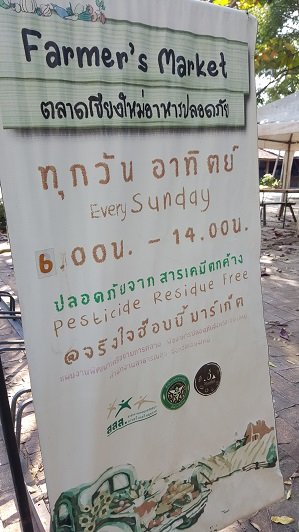

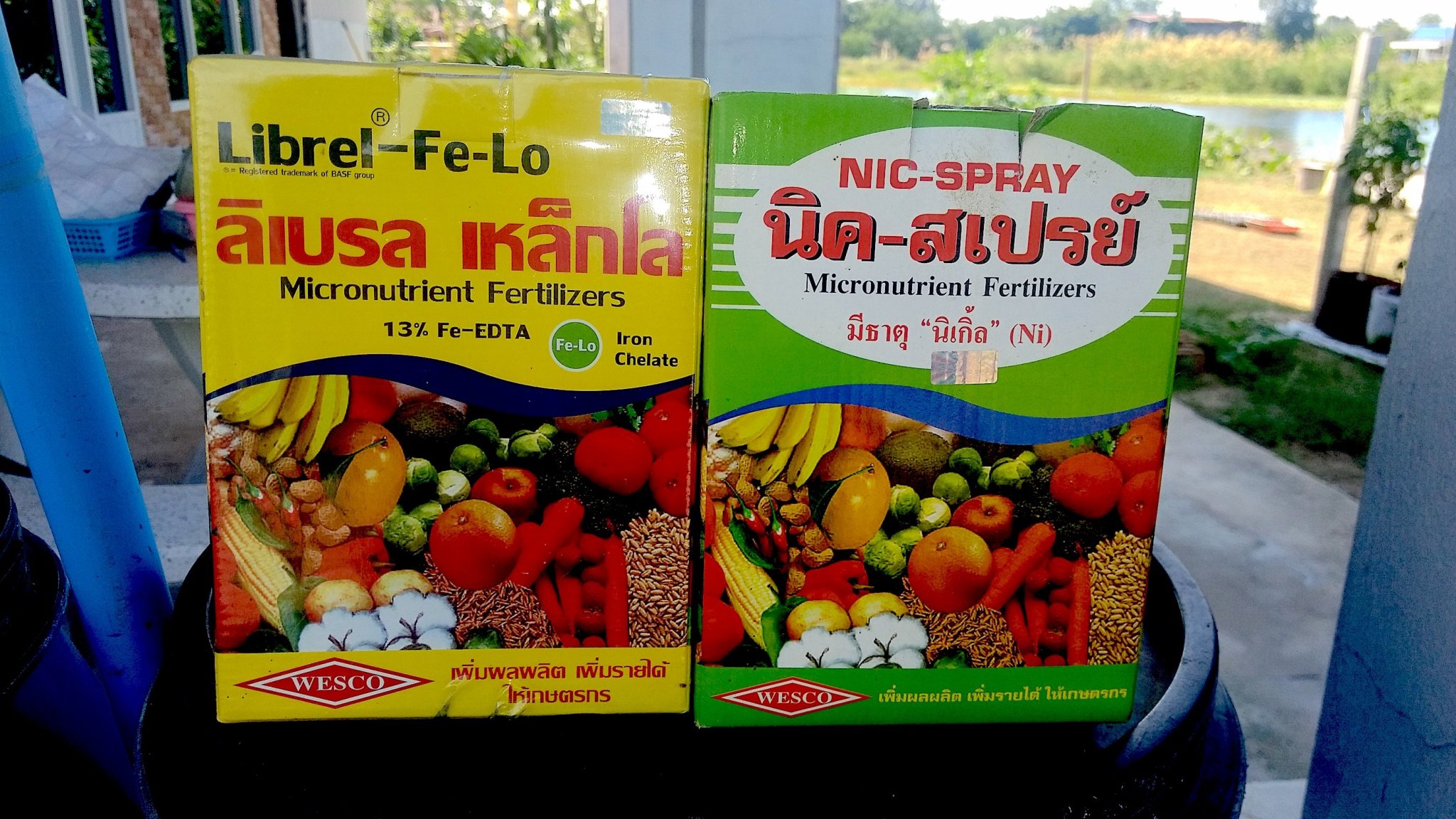

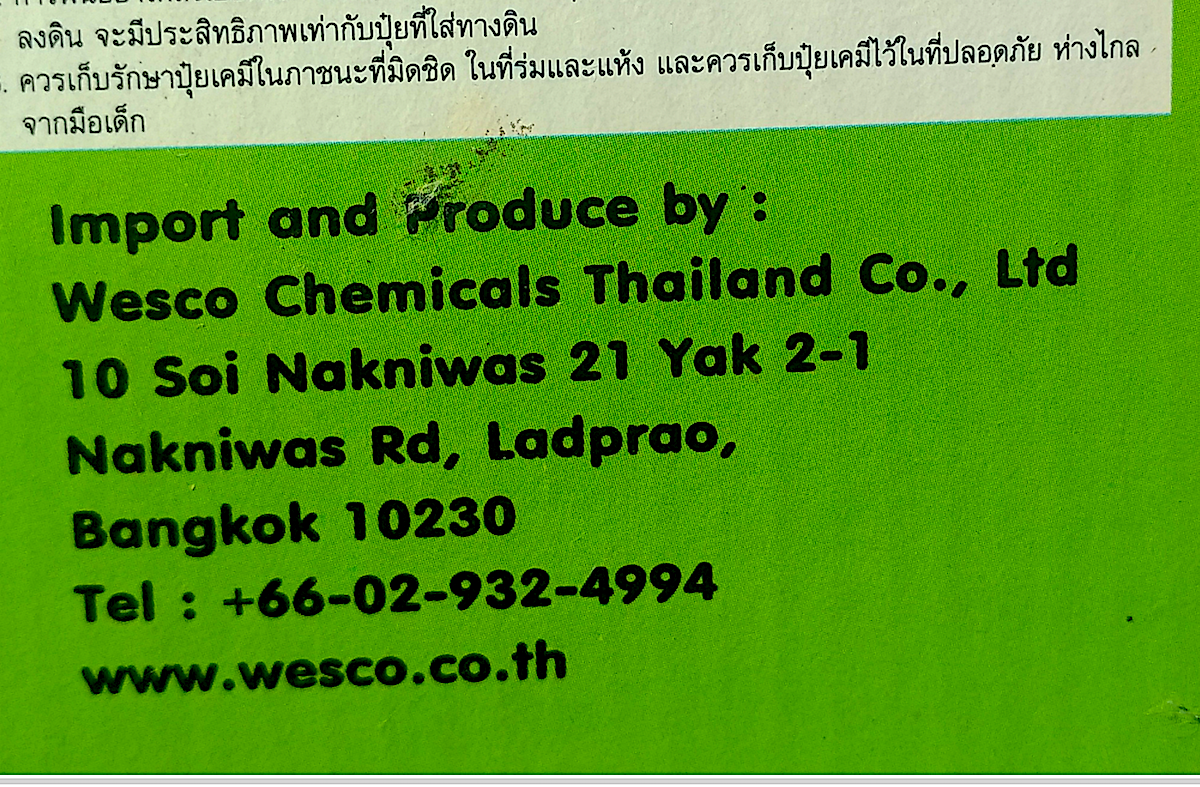
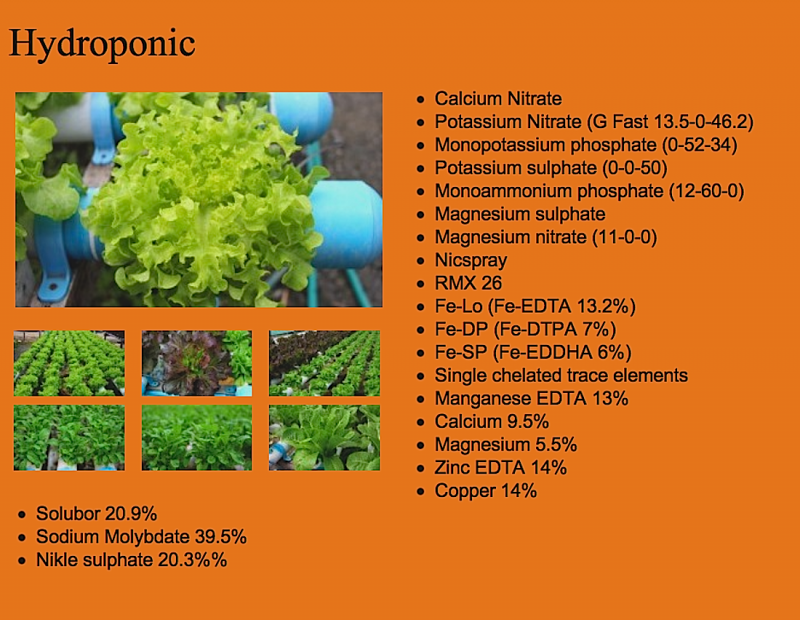
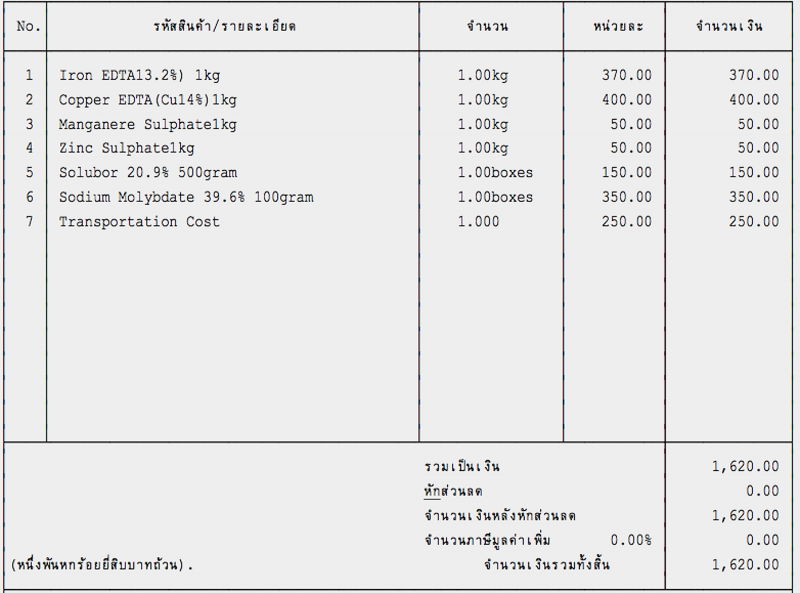
Rhino beetle hole
in Plants, Pets & Vets in Thailand
Posted
https://forum.thaivisa.com/topic/1084193-pheromones-for-rhino-beetle/?tab=comments#comment-13842805
Here's some more info from farming forum. and there are other past discussions on this and farming forums.
Photo shown here is not rhino beetle larvae.
Arjen is right that you could use a fresh made hole to stem inject a systemic insecticide.
I don't agree that it is necessary to fill a hole, or to prevent water in the hole, only for cosmetic reasons.
I would not create a big hole to dig out suspected CRB or red palm weevil. Use less invasive technique of management.
Learn to overcome ignorant negativity about safe and effective pesticide use, and choose non toxic or least toxic biorational methods and materials. Or learn to live without palms.